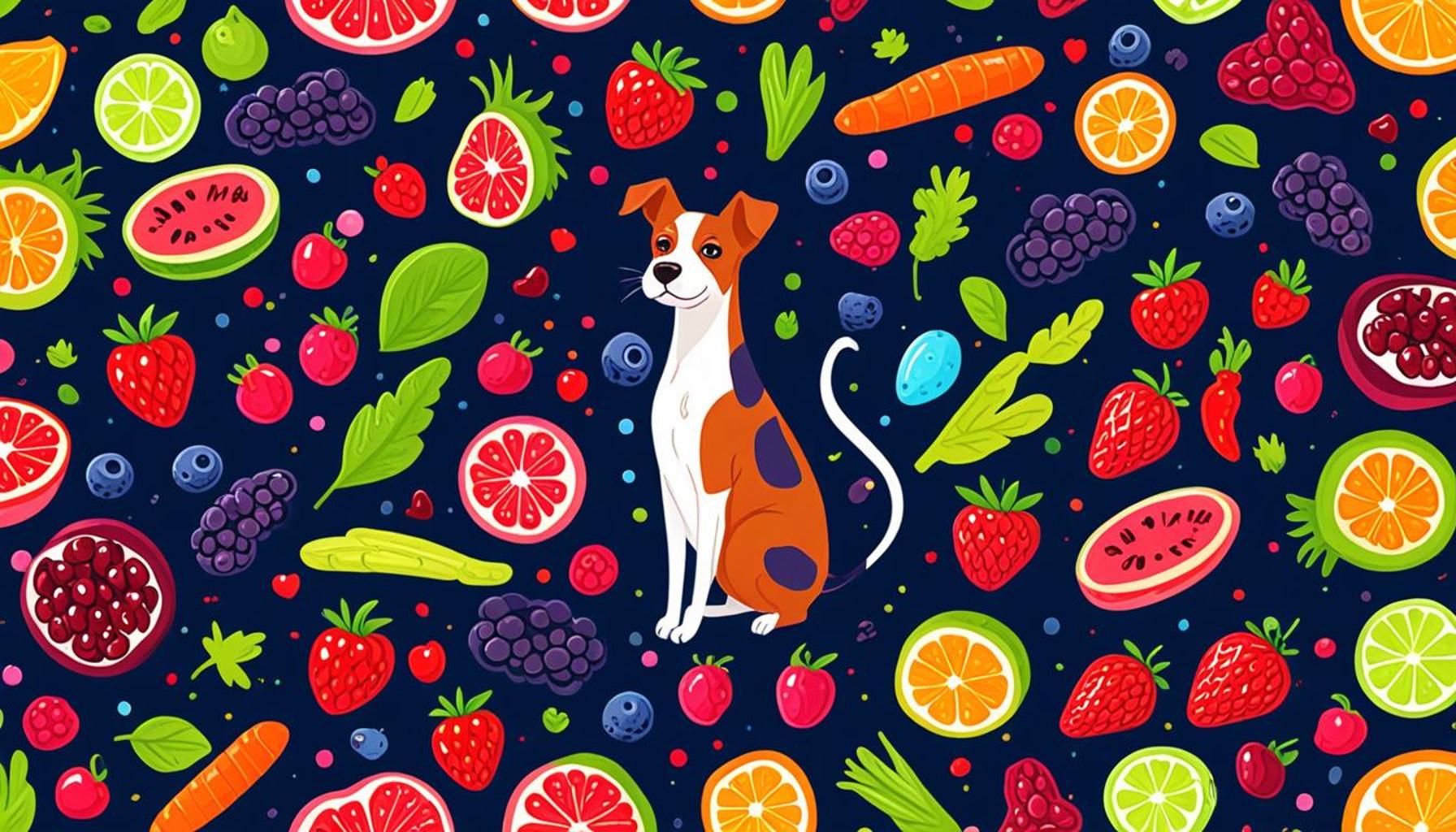The Relationship Between Nutrition and Food Allergies in Dogs and Cats

Navigating the Intricacies of Pet Nutrition
Nutrition is fundamental to the well-being of our pets, but its role extends beyond just providing energy and health. In recent years, the link between nutrition and food allergies in dogs and cats has gained significant attention among veterinarians and pet owners alike. Understanding how the food we provide can impact our pets is essential for ensuring they lead happy, healthy lives.
Food allergies can manifest in various ways, and it’s crucial for pet owners to recognize these signs early on. Some common symptoms include:
- Skin irritations and itching: Pets with food allergies may develop rashes, hotspots, or excessive itching due to inflammation. Conditions like atopic dermatitis often flare up when triggered by certain ingredients in foods.
- Digestive issues: Many pets experience gastrointestinal disturbances such as vomiting, diarrhea, or gas. These symptoms can stem from their bodies’ inability to process certain components within their diet.
- Ear infections and inflammatory conditions: A recurring ear infection in pets can often point to underlying food sensitivities. Chronic otitis, which is inflammation of the ear canal, may be exacerbated by dietary triggers.
Recognizing these symptoms is the first step. Understanding how what we feed our pets affects their allergic reactions can be a game changer. Several factors contribute to food allergies, and being aware of them can significantly improve a pet’s quality of life. Key contributors include:
- The type of protein sources: Different animals have varying tolerances to certain proteins. For instance, common sources like chicken or beef may trigger allergies in some dogs, while fish or novel proteins such as duck or venison might be better tolerated.
- Common allergens: Ingredients like grains, dairy, and even specific meats are often culprits. Many pet foods contain fillers that can irritate sensitive digestive systems, leading to allergic reactions.
- Protein hydrolysis and elimination diets: These diets intentionally limit exposure to potential allergens. A hydrolyzed protein diet can break down proteins to a size that minimizes the immune response, while elimination diets systematically introduce ingredients to identify specific triggers.
As pet parents in the United States, becoming informed about optimal nutrition is paramount. Pet food choices have skyrocketed, with options ranging from grain-free to raw diets, presenting an abundance of choices. However, this variety brings the challenge of identifying which options are best suited for your individual pet. Consulting with a veterinarian who understands the link between nutrition and allergies is crucial in this process. Regular check-ins can help tweak diets based on your pet’s symptoms and health changes.
This journey into the interconnections between nutrition and food allergies requires an open mind and a willingness to explore our pets’ unique dietary needs. By actively engaging with feeding practices, pet owners can not only enhance their pets’ quality of life but also prevent potential allergic reactions that may disrupt their well-being.
LEARN MORE: Click here for essential insights
Understanding Food Allergies: The Role of Nutrition
As pet owners, we often believe that feeding our furry friends the best food will guarantee their health and happiness. However, the nuanced relationship between nutrition and food allergies in dogs and cats can complicate matters. The truth is, what is nourishing for one pet may be detrimental for another. Identifying specific dietary triggers is not only key to alleviating allergies but can also transform an animal’s overall well-being.
The foundation of these allergies lies in the immune system’s response to specific proteins or ingredients, often leading to an inflammatory reaction. Understanding this process necessitates recognizing that pets can develop allergies to previously well-tolerated foods or ingredients. For instance, a dog that has been eating a particular brand of food for years may suddenly exhibit symptoms of allergy due to a change in the formulation or even due to a sensitivity that has developed over time.
Key to tackling this issue is discerning the complexity of pet diets. Here are several factors that pet owners should consider:
- Food Quality: The sourcing and quality of ingredients can greatly affect a pet’s allergic reactions. High-quality, single-source proteins are often less likely to trigger allergies compared to processed grains or fillers found in many commercial pet foods.
- Ingredient Transparency: Many pet food manufacturers don’t provide clear information regarding the sources of their ingredients. Ultimately, transparent labeling can help guide pet owners in selecting diets tailored to their pets’ health needs.
- Dietary Diversity: Just as a varied diet is essential for human nutrition, offering pets a range of foods may help in preventing the development of food allergies. Limited-ingredient diets can reduce exposure to potential allergens.
The path to identifying food allergies involves a diligent process of observation and experimentation. It is often suggested that pet owners keep a food diary, tracking what their pet eats, alongside any subsequent reactions, should they occur. This documentation can greatly assist a veterinarian in diagnosing the issue and crafting an appropriate dietary plan.
Moreover, understanding nutritional balance is critical. Pet foods that are excessively rich in fillers or that lack ample omega-3 fatty acids may exacerbate allergic reactions. Omega-3 is known for its anti-inflammatory properties, which can help soothe irritated skin and support overall skin health.
Additionally, it’s important for pet owners to be aware of trends in pet nutrition. With the rise of popular diets such as grain-free or raw-food options, there has been an increase in discussions about their potential link to health outcomes, including allergies. While some pets thrive on these diets, others may experience sensitivity. Proper veterinary guidance is invaluable in navigating these complex choices.
In summary, the relationship between nutrition and food allergies in dogs and cats is a multi-faceted issue that calls for ongoing attention and understanding. By being proactive and informed, pet owners can make choices that not only enhance their pets’ daily lives but also minimize the risk of allergic reactions.
| Advantage | Explanation |
|---|---|
| Improved Digestive Health | A well-planned diet helps to manage food allergies and reduces gastrointestinal distress in pets. |
| Enhanced Immune Function | Proper nutrition strengthens the immune system, potentially reducing allergy reactions. |
The relationship between nutrition and food allergies in dogs and cats is a complex yet critical aspect of pet health. Understanding the dietary triggers of allergies can lead to necessary changes that promote pet well-being. Not only does a suitable diet help alleviate allergy symptoms, but it can also prevent them from occurring in the first place. For instance, incorporating high-quality proteins and hypoallergenic ingredients may minimize allergic reactions, fostering a more balanced health profile. Moreover, recognizing the signs of food allergies, such as skin irritations or digestive issues, allows pet owners to make informed dietary adjustments, creating a diverse and supportive nutritional plan. As new research emerges, pet owners and veterinarians alike must stay informed about the latest developments in nutrition and allergy management to ensure the best care for furry companions.
DISCOVER MORE: Click here for essential pet nutrition insights
Exploring Dietary Management and Allergy Treatments
Once a food allergy in a dog or cat is suspected or diagnosed, the journey toward managing it effectively begins. Understanding how nutrition interplays with therapy can be transformative, leading pet owners to adopt a more thoughtful approach. The goal is clear: not only to avoid allergens but also to enhance the pet’s quality of life through proper dietary choices.
One common method employed in managing food allergies is the elimination diet, often recommended by veterinarians. This approach involves removing all suspect ingredients from the pet’s diet and substituting them with novel proteins and carbohydrates that the pet has never been exposed to. The typical duration for this process is several weeks, allowing for any allergic reactions to subside. It’s crucial, however, that pet owners meticulously track their pet’s response to each new food item reintroduced, as this can help pinpoint the culprits behind the allergic reactions.
Alongside elimination diets, there is an increasing popularity of hydrolyzed protein diets. These specialized diets contain proteins that are broken down into smaller components, reducing the likelihood of triggering an allergic response. While these diets can be more costly, many owners report significant improvements in their pets’ symptoms after transitioning to hydrolyzed options. It is important to consult with a veterinarian to determine the suitability of such diets for one’s pet.
In addition to dietary modifications, incorporating supplements can play a significant role in managing food allergies. For example, probiotics can support gut health, potentially strengthening the immune system and reducing the frequency of allergic reactions. Research has shown that a balanced gut microbiome can influence an animal’s overall health, including their susceptibility to allergies. Furthermore, certain fatty acid supplements, such as those rich in omega-3 and omega-6, can help improve skin condition and reduce inflammation, further alleviating allergy symptoms.
Moreover, it is essential to recognize the role of environmental allergies versus food allergies. Many pets may have reactions that seem linked to food but are actually triggered by allergens such as pollen, dust mites, or fleas. Implementing a holistic approach that considers both dietary and environmental factors is crucial for effective management. Regular grooming and bathing can help mitigate the impact of environmental allergies, while also serving to keep the pet’s coat healthy and free from irritants.
The veterinary community is increasingly advocating for an integrated approach to allergies, combining behavioral insights with nutritional strategies. Pet owners are encouraged to maintain open lines of communication with their veterinarians, ensuring that all aspects of their pet’s health and behavior are taken into account. This partnership can yield better outcomes, especially in complex cases where multiple allergens may be at play.
Beyond pet food choices, pet owners should also be wary of common household foods that may pose a danger to their pets. Foods such as chocolate, onions, garlic, and grapes are known to be toxic to dogs and cats. Awareness of these ingredients is particularly vital when considering homemade diets or snacks. Educating oneself about these dangers is a vital part of responsible pet ownership, allowing for safer dietary practices.
Overall, the interplay between nutrition and food allergies in dogs and cats underlines a broader narrative: one where informed choices lead to healthier lives. Pet owners who take the time to understand their pets’ dietary needs stand a better chance of navigating the complexities of food allergies effectively.
LEARN MORE: Click here to find out why adopting from local shelters matters
Conclusion
As we delve into the intricate relationship between nutrition and food allergies in dogs and cats, it becomes abundantly clear that a proactive and informed approach is paramount. Pet owners are faced with the critical task of discerning between food allergies and other environmental factors that may affect their beloved companions. With increasing occurrences of allergies observed in pets, understanding the significance of tailored nutritional practices can revolutionize their health and well-being.
The use of elimination diets and hydrolyzed protein options underscores the importance of methodical dietary management. These strategies enable pet owners to identify specific allergens while promoting optimal health. Coupled with supplements like probiotics and fatty acids, the potential for improved immunity and reduced inflammation cannot be underestimated. This holistic methodology not only addresses the current symptoms but lays the groundwork for long-term management.
Moreover, as documented evidence continues to emerge, it is vital for pet owners to engage actively with their veterinarians. This collaborative communication ensures a comprehensive view of their pets’ health is maintained, encompassing both nutritional therapy and environmental considerations. By taking necessary precautions against toxic household foods and remaining vigilant about potential allergens, pet owners contribute significantly to their pets’ quality of life.
Ultimately, navigating food allergies in our canine and feline companions is a multifaceted journey, one that is best approached with knowledge, patience, and love. Emphasizing the importance of nutrition while remaining aware of the broader context paves the way for a healthier, happier life for dogs and cats alike. As we continue to learn and adapt our understanding, the ultimate beneficiaries will be our cherished pets, who depend on us to advocate for their health and happiness.


